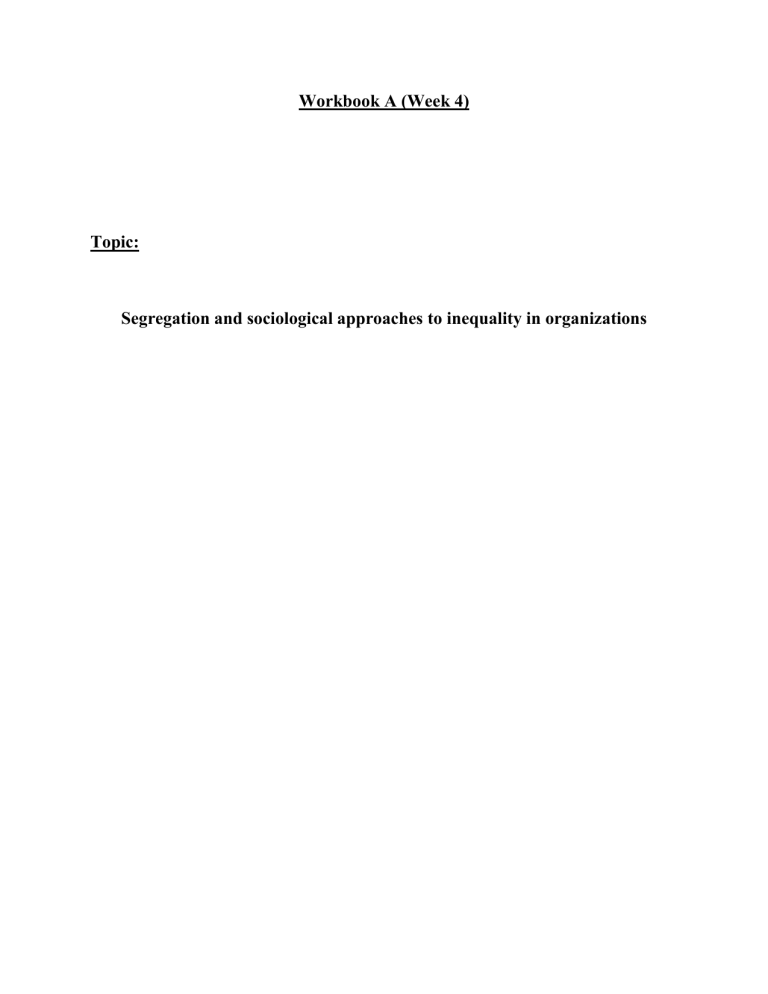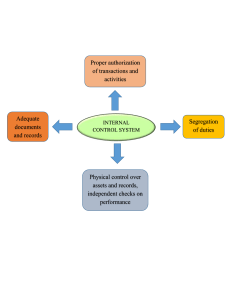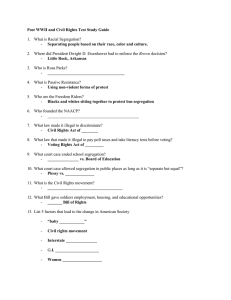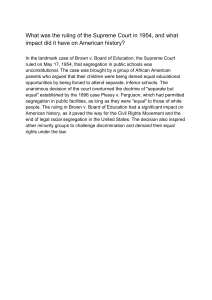
Workbook A (Week 4) Topic: Segregation and sociological approaches to inequality in organizations Question 1: Explain the rationale for segregation in the labour market using either economic or sociological theories? The justification for labor market segregation finds its roots in a combination of economic and sociological theories. It is crucial to recognize the intersection of these theories, as economic and social elements are intertwined in shaping the dynamics of the labor market. Some important economic and sociological theories are following Economics theories • Human Capital Theory • Discrimination and Prejudice • Occupational Crowding Sociological theories • Social Capital Theory • Cultural and Societal Norms • Institutional Discrimination Rationale for segregation in the labour market using either economic The rationale for segregation in the labor market often stems from economic considerations. Economic theories, such as human capital theory, underscore the importance of skills and education in determining an individual's productivity and earning potential. Disparities in access to education and training opportunities lead to certain groups being disproportionately represented in lower-skilled jobs, thereby contributing to labor market segregation (Blundell et al., 2021, Williams, 2008). Discrimination and prejudice theory explains that a prevalent economic factor can also play a significant role in rationale for segregation in the labour market. Systematic exclusion from higher-paying or prestigious jobs based on factors like race, gender, or ethnicity perpetuates segregation (Lundahl and Wadensjo, 2015). Occupational crowding theory explained that segregation in the labour market influence by economic forces like wage differentials, can result in the concentration of specific groups in particular occupations (Misir, 2021). In essence, economic theories provide insights into how unequal access to education, discriminatory practices, and occupational dynamics contribute to the rationale behind labor market segregation. References BLUNDELL, R., CRIBB, J., MCNALLY, S., WARWICK, R. & XU, X. 2021. Inequalities in education, skills, and incomes in the UK: The implications of the COVID-19 pandemic. Institute for Fiscal Studies, 1-42. LUNDAHL, M. & WADENSJO, E. 2015. Unequal Treatment (Routledge Revivals): A Study in the NeoClassical Theory of Discrimination, Routledge. MISIR, P. 2021. COVID-19 and Health System Segregation in the US: Racial Health Disparities and Systemic Racism, Springer Nature. WILLIAMS, D. R. 2008. The health of men: structured inequalities and opportunities. American journal of public health, 98, S150-S157.



